Food
The ingredient you were looking for
to develop your skills as a pastry chef.
In certain applications in the food industry (e.g. confectionery, dairy products, ice cream, etc.), where it is generally necessary to avoid adding water to ingredients, crystalline fructose and dextrose are particularly advantageous compared to similar ingredients in liquid form.
In particular, crystalFRUCTOGRAPE and crystalDEXTROGRAPE, alone or in combination in crystalGRAPESUGAR, make it possible to achieve unique technological and sensory results compared to sucrose, but also compared to fructose and dextrose of different origins.

In jams and marmalades, where the sugar content is usually 35-60%, sugars provide bulk and volume, influence the gelification process and consequently have a great effect on the consistency of the final products. Glucose and invert sugar syrups are typically used to prevent the crystallisation of sucrose. The higher osmotic pressure and low water activity of dextrose and fructose promote the microbiological stability of low-Brix fruit preparations. Consequently, grape sugar (in the traditional form of concentrated grape juice) has long been used in these products, due to its improving effects on the sweet taste and enhancing the fruity aroma.
The crystalline form of grape sugars allows them to be added directly at the start of fruit preparation, without the addition of water. This results in shorter cooking times, helping to maintain the texture and aroma of fruit in the final product.
The use of crystalGRAPESUGAR and crystalFRUCTOGRAPE grape sugars in jams and marmalades has the following advantages (R&D study with Food & Project and ADACTA):
- Reduced evaporation time and costs compared to liquid sugars
- Balanced sweetness
- Lingering fruit aroma
- Sucrose-like structure
- Excellent oven resistance
- Ability to use the claim 100% from fruit
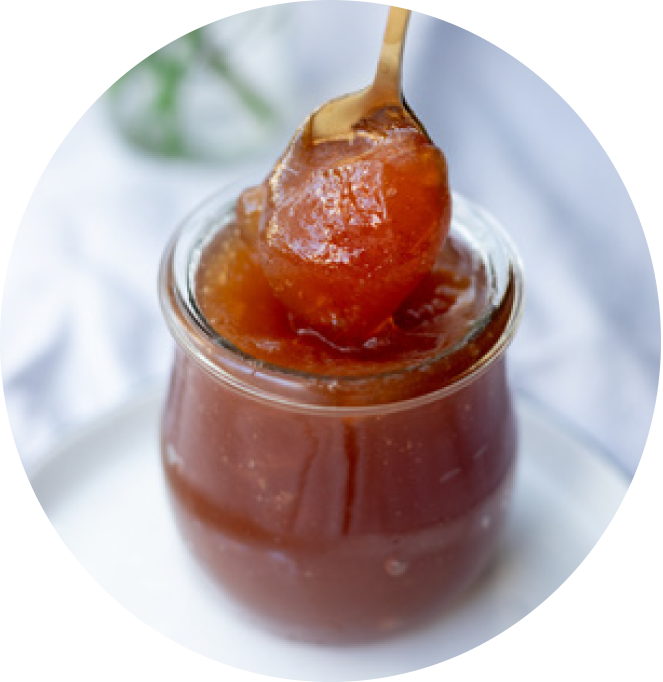

In many bakery preparations, crystallised grape sugars promote softness and body and improve the stability of the final product. The combination of fructose and dextrose in crystalGRAPESUGAR makes it possible to regulate the level of sweetness and crystallisation, and creates a special harmony for product stability, thanks to the hygroscopic properties of fructose and the reducing properties of dextrose.
Experience has shown that in leavened doughs crystalFRUCTOGRAPE and crystalGRAPESUGAR ensure perfect elasticity of the dough and a good result in the final product in terms of stability, volume, softness and texture, flavour persistence and also in leavening.
Yeasts cannot ferment sucrose directly, but must first hydrolyse it into glucose and fructose. These sugars, used individually or in combination (as in crystalGRAPESUGAR) provide a source of carbohydrates that are immediately available for fermentation by promoting the production of CO2 that will eventually increase (raise) the dough. Dextrose, particularly, accelerates fermentation (e.g. in the preparation of bread dough), which helps to shorten the initial stages of dough preparation.
The use of crystalGRAPESUGAR and crystalFRUCTOGRAPE grape sugars in baked goods has the following advantages (R&D study carried out with CAST ALIMENTI):
- Enhanced leavening
- Greater stability in assembly
- Improved time management
- Greater stability, with finished products that are generally softer and fluffier and stay that way for longer
- “Widespread” Maillard reaction, also on the inside, with more aromatic products and a more golden colour
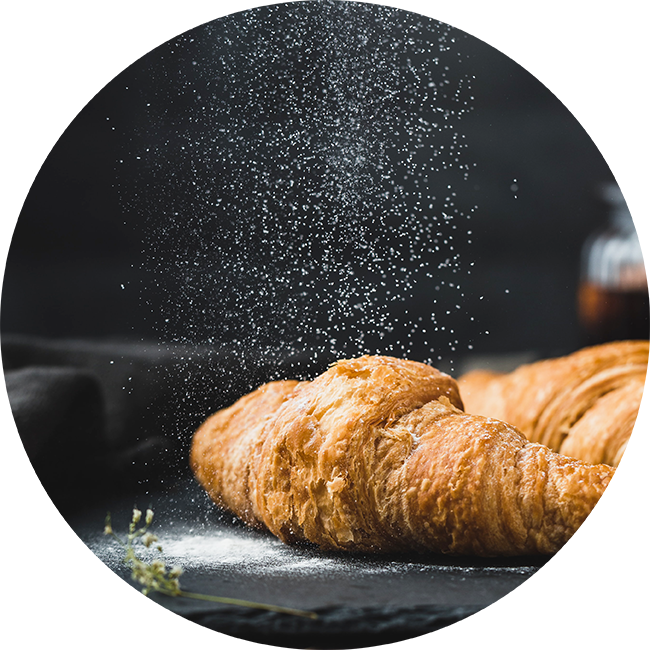

In ice cream and sorbet production, the dry constituents of the mixture are crucial for the stability and consistency of the final product. Sugars lower the freezing point of ice cream by preventing the formation of ice crystals. Monosaccharides, such as fructose and dextrose, are more effective than sucrose in lowering the freezing point, making products softer and more spreadable. For this reason, dextrose (or glucose) is a common ingredient added to sucrose in the preparation of ice cream.
As a result of a collaborative study between Naturalia and Carpigiani Gelato University, it has been proven that crystalGRAPESUGAR is an excellent substitute for the traditional sugar composition for the production of ice cream, in several respects, both technological and sensory. Its use makes it possible to lower the sugar content (compared to “standard” recipes with sucrose) to a variable value of 10-30% without altering the organoleptic characteristics of the final product (ice cream or sorbet), which are actually enhanced, in particular in fruit preparations.
Another important result is the evidence that crystalFRUCTOGRAPE has an excellent effect in fruit preparations (sorbets), clearly distinguishable from traditional fructose, so that the aroma of the fruit used is perfectly enhanced.
The use of crystalGRAPESUGAR and crystalFRUCTOGRAPE grape sugars in ice cream and sorbets has the following advantages (R&D study carried out with CARPIGIANI GELATO UNIVERSITY and FOOD&PROJECT):
- Highly consistent and creamy
- Lower freezing point
- Enhancing the fruit flavour
- Enhancing natural flavours
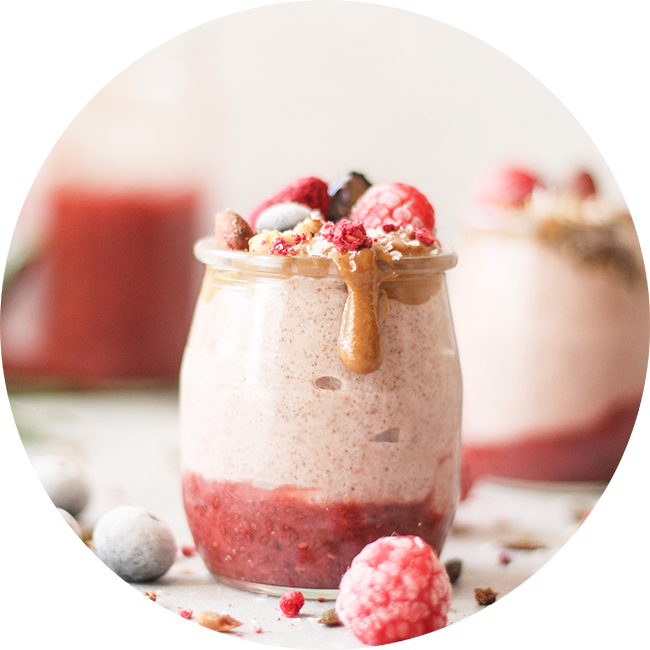

Grape sugars are ideal for sweetening powdered instant drinks, freshly squeezed fruit juices or energy drinks.
The use of crystalGRAPESUGAR and crystalFRUCTOGRAPE grape sugars in drinks has the following advantages:
- Enhancing natural flavours
- High solubility
- Excellent synergistic capabilities with other low-calorie natural sweeteners
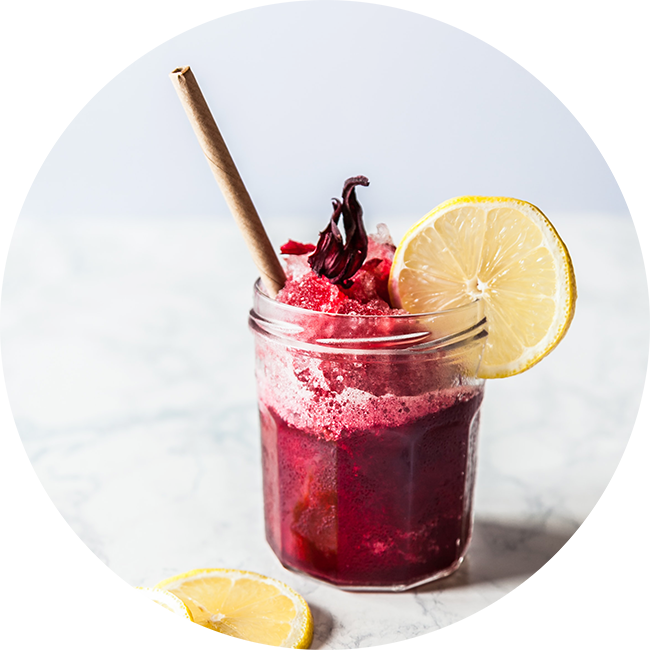

The crystalline form and chemical/physical specifications of crystalDEXTROGRAPE and crystalFRUCTOGRAPE, which comply with the European and American pharmacopoeias, make them interesting ingredients/excipients for the nutraceutical sector, which is increasingly focused on enhancing the value of natural products.
They are used in the formulation of dietary supplements and enhancers, mainly for their sweetening and energy functions (fructose is a slow-release energy source that can be used to sustain prolonged physical exertion, while glucose is an immediate energy source to restore the energy reserves of the stressed body).
The improved aromatic performance of grape sugars is also a potential advantage in masking unpleasant aftertastes of certain active ingredients.
It has also been shown that crystalline grape sugars (including fructose) have excellent compressibility characteristics, even at very high concentrations of up to 100%.
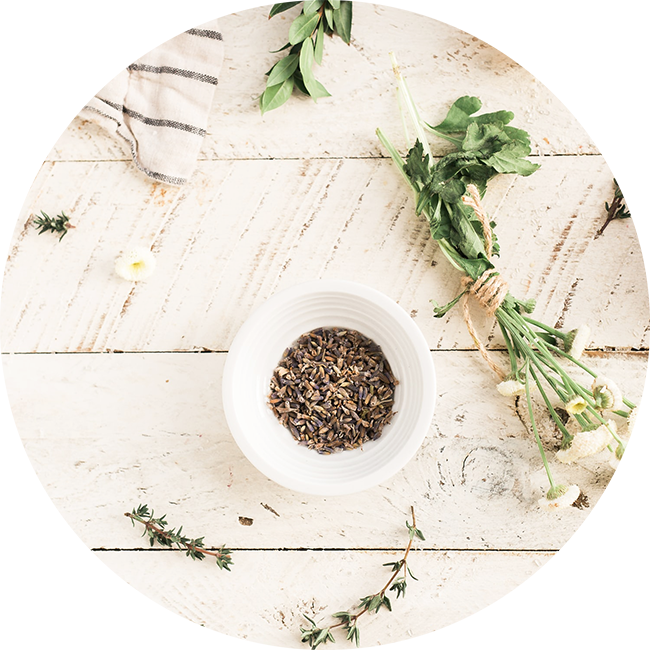

Mixtures based on crystalline fruit sugars can also be used in both food and nutraceuticals:
LIGHT
The crystalGRAPESUGAR.Light and crystalFRUCTOGRAPE.Light blends are reduced-calorie sweeteners consisting of crystalline grape sugars and steviol glycosides (stevia leaf extract). Steviol glycosides are contained in “light” blends in such a concentration (0.5%) that they double the sweetening power and thus half the sugar and calorie content for the same sweetening. LIGHT blends are used in the food industry to create products with reduced sugar and calorie content (e.g. baked goods, jams, juices, ice cream, sweets) and in the nutraceutical industry to produce natural products with optimised taste (e.g. fillers in tablets or sachets).
RED
The blends crystalGRAPESUGAR.Red and crystalFRUCTOGRAPE.Red consist of crystalline grape sugars and an extract of red grape polyphenols in a concentration of 0.5-1%. They appear as burgundy-coloured crystals with a sweet, sugary taste and aroma typical of red grapes. They are used for food products, functional foods, cosmetics and nutraceuticals.
CREAM LINE
The semi-finished powders for ice creams and sorbets are mixtures of crystalline sugars from date grapes and other ingredients that formulate from specific recipes (emulsion, stabilizers, fibers, cocoa powder). They find application in the food sector, particularly for ice creams and sorbets. They are currently intended exclusively for industry and craft workshops.


